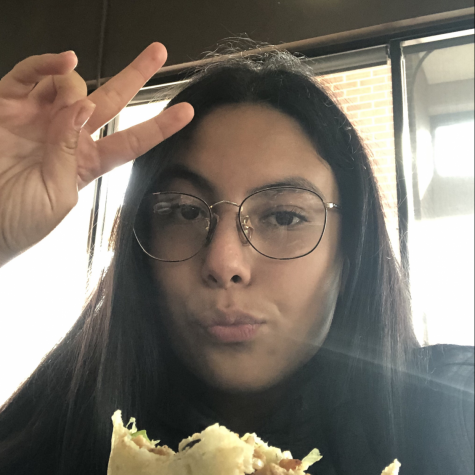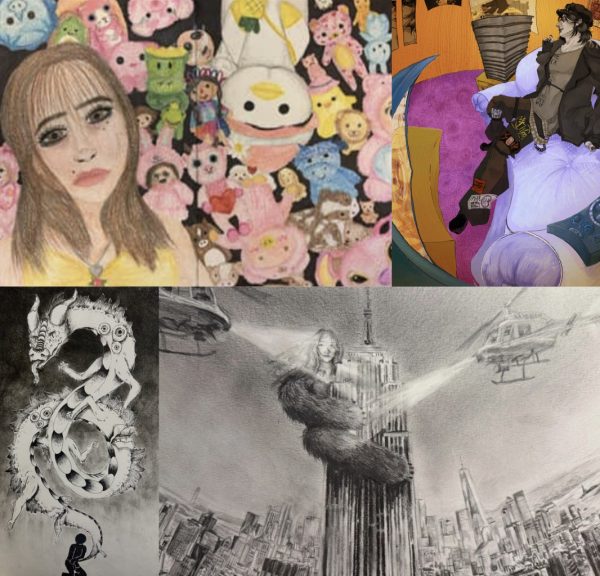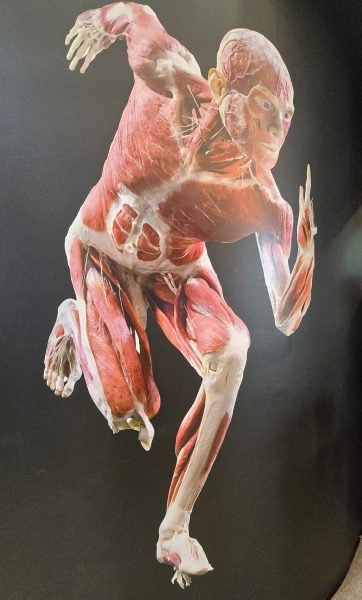An Hour of Latin Dance Will Cure That Headache from Class
The Latin Dance Club welcomes anyone to dance Tuesdays during lunch
It’s lunchtime. You just got out of a class where you had a test. You’re trying to find something to do to destress. You start walking down the English hallway and hear music. The rhythmic beats make you start walking a little faster to see where it comes from, and when you get to room 101, you look inside and you see a throng of students dancing, swaying their hips and laughing. You walk into the room to be submerged in a world of Latin culture and music next thing you know you have been invited to dance and you forget about the stresses of the school day.
The Latin dance club was started in 2012 and is held in Mrs. Jimenez’s class. She created the club around seven or eight years ago because of her love for dance and her culture. She also wanted to create a time and space for students to relax and have fun during a stressful school day.
Although the club is called Latin Dance, it is not only for people of Latin descent. You will walk in to see people from many other cultures.
“It lets people express themselves and release stress while feeling included,”junio Emma Pierce said.
Here are three of the main types of dance that you’ll see and be able to learn in Latin dance.
BACHATA- In the club, you’ll be able to dance things like Bachata which originated in the Dominican Republic and is a sensual three-step dance with a Cuban hip motion that involves a stronger movement to the hip on the 4th beat. Normally danced with your knees slightly bent to be able to sway your hips with ease, movement of the hips in Bachata has a great impact since Bachata is a dance that comes from the soul and is very sensual, and your hips are used to emphasize that.
MERENGUE: While on the other side of the musical spectrum you have merengué, also coming from the Dominican Republic, is a light and frothy dance just like the name, which comes from a pastry made up of egg and confectioners sugar. It is short and precise in rhythm. The music in merengué is sharp, quickening and very exciting. It makes you feel as if you were chasing back and forth with your partner, and it is played mostly in clubs to liven it up with its upbeat and energy-giving sound. Although ballroom merengué is slower and has a modified hip action, it’s mostly heard in ballrooms or fancy parties. The music doesn’t stop there.
CUMBIA: You also have Cumbias that are from Colombia. This type of dance is a side sway with a two-step rhythm left to right. The music can vary for cumbia depending on the song seeing as you have different types such as electro Cumbia, rock Cumbia, and even a calmer version of Cumbia. Something that all these types of music have is that they all come from African mixture with indigenous and European culture most of it was music that slaves made while working in the fields. Meanwhile, Cumbias were made by slaves working in the mines of Colombia and the name comes from the word African word Cumbe which means dance.
These are only three of the many types of dance so you will never get bored with the music variation in Latin Dance club because there will always be a different song with a different beat and feel to it. You might walk in with little hope to find a song that you will truly like and there so many different types of songs that you might be able to find your new favorite song.
While anyone can enter the club and dance there are students that are proud of their culture and feel more connected because they see people from the same culture all in one space enjoying themselves and the representation of their culture.
“It gives representation to the Latin American Culture and it gives the space to find others with similar cultures or to even teach someone with a completely different culture to learn about us” senior Isamary Fajard said.
Next Tuesday, if you want to relax, head into room 101 during the second half of lunch and meet new people and a new culture.
Your donation will support the student journalists of Carnegie Vanguard High School. Your contribution will allow us to cover our annual website hosting costs and fund field trips, competition fees, and equipment. We appreciate your support!

I'm a sophomore who likes to play soccer and hang out with friends.






